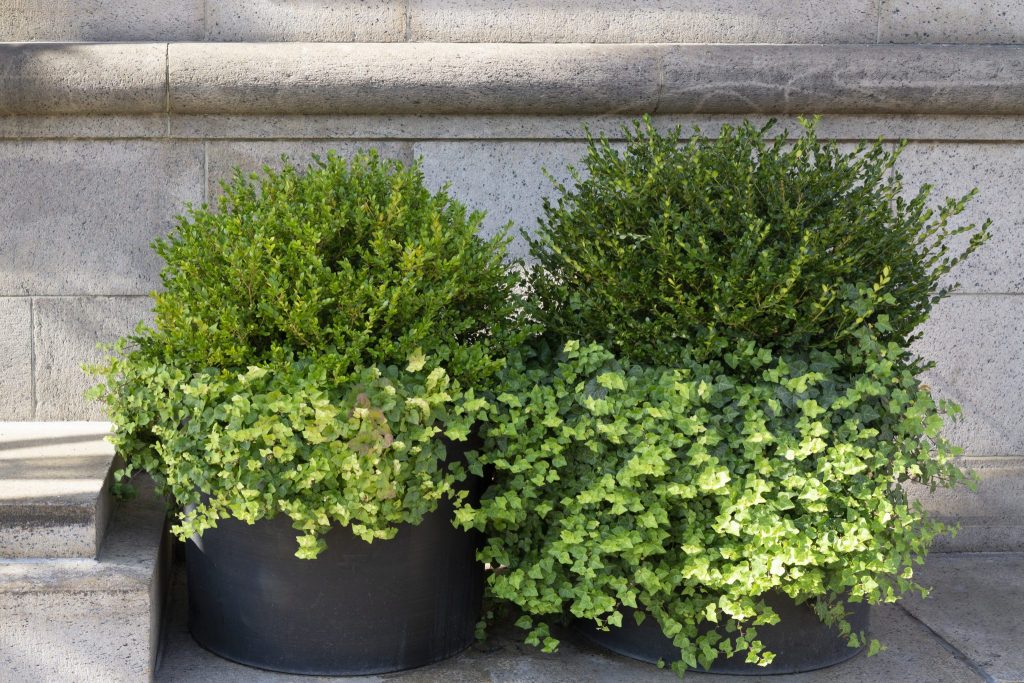What material is best for outdoor planters?
What material is best for outdoor planters?
Choosing the right material for your outdoor planters can be overwhelming due to the wide variety of options available. In this article, we’ll explore some of the most popular materials for planters and raised beds, discussing their benefits and drawbacks to help you make an informed decision for your garden or allotment.
Contents

Wood
Wood is perhaps the first material you’ll think of when it comes to raised beds. The vast majority of raised beds on allotment sites are made of wood – a lot of it reused from old pallet collars or pallets themselves. This has the benefit of being affordable, although arguably less pleasant to look at than a purchased wooden raised bed.
A couple of drawbacks to using pallet wood are that it may have been treated with a harmful substance (although thankfully this is becoming less common) and that it won’t last all that long as pallet wood is often not even particularly good quality to begin with.
Purchased wood will probably be of a higher quality and some high-end wooden planters can look very attractive. They can also have their lifespan extended if you line them with plastic but they are still unlikely to last as long as raised metal beds.
Plastic
If wood is the cheap choice for raised beds then plastic fulfils the same role for pots and containers. You will struggle to get a pot with a lower upfront cost than those made of plastic, but it also has probably the shortest lifespan. Its lightness and ability to be moulded into many shapes and sizes are also advantages of plastic.
A major disadvantage is the aforementioned shorter lifespan. A cheap plastic pot may last as little as a year or two before it splits, especially if it is handled roughly. Sunlight can also weaken some plastics, making them become brittle and splinter over time. Environmental and health impacts are other considerations. Plastics are quite energy-intensive to manufacture for such a relatively short lifespan. They also could release microplastics as they break down, which can enter the food chain with consequences that are still being researched.
Terracotta
Terracotta is traditionally the more high-end choice when it comes to planters. They have a gorgeous aesthetic and age gracefully as long as they are not exposed to wet and cold weather. They are also thought to have a positive impact on plant health as clay is porous so let’s water and air move more freely around the plant’s roots.
Disadvantages of terracotta pots include that they are quite expensive to purchase upfront compared with their plastic counterparts. They are also quite heavy and delicate and won’t respond well to being dropped! Unglazed planters have the added problem of not lasting well in winter weather. The mixture of wet and frosts mean that they can crumble quite quickly. Glazed planters don’t have such an issue with this but you do miss out on the unique terracotta appearance.
Concrete
Concrete planters have many similar characteristics to terracotta, but don’t usually look as nice. They are generally more resistant to winter weather and can be painted to fit various garden aesthetics. Concrete planters tend to be very sturdy and provide excellent stability, making them ideal for large commercial planters that need a strong base. Their weight ensures they won’t easily topple over in windy conditions, adding to their reliability in an outdoor setting.
However, concrete planters also come with a few drawbacks. They are quite heavy, which makes them difficult to move once placed, and they can be relatively expensive compared to materials like plastic or wood. Additionally, while concrete is robust, it can still break if dropped or not handled properly.
Fibreglass
Fibreglass planters can be extremely long-lasting. They are also lightweight and come in a range of sizes, shapes, and colours. Many fibreglass planters are designed to mimic other materials, but can a replica ever look as good as the real thing? They may also need occasional cleaning to maintain peak condition as the material can become splashed.
Despite their durability, fibreglass planters come with a high upfront cost. Additionally, while they are strong, they are not as robust as most metal planters. They also present recycling challenges and are not very environmentally friendly, making them less suitable for environmentally conscious gardeners.
Metal
Metal planters are very strong and durable, come in a range of styles and shapes, and can have a beautiful look. Galvanised steel planters will last a long time due to their zinc coating and offer an industrial aesthetic. Corten garden planters have a unique appearance, with their rust-coloured coating that actually protects and extends the life of the planter, even lending it an element of self-repair if scratched. Powder-coated steel, meanwhile, comes in a vast array of colours and offers a similar look to many fibreglass planters, though they do tend to be stronger and heavier than fibreglass.
High-quality metal planters, particularly those made from 3mm thick steel, do come with a high upfront cost and are among the most expensive materials reviewed. However, they can represent a lifetime investment with the right care and conditions. They are almost guaranteed to outlast traditional materials like plastic, wood, and terracotta. A frequent concern is the overheating of plant roots, but this issue is vastly overstated and can usually be avoided by insulating the inside of the planter.
Final thoughts
After considering various materials for outdoor planters, it’s clear that each option has its unique benefits and drawbacks. However, in our opinion, metal planters stand out as the top choice for their exceptional durability, aesthetic versatility, and long-term value. Whether for a garden, balcony, or allotment, metal outdoor planters offer a combination of longevity and style that is hard to beat.
